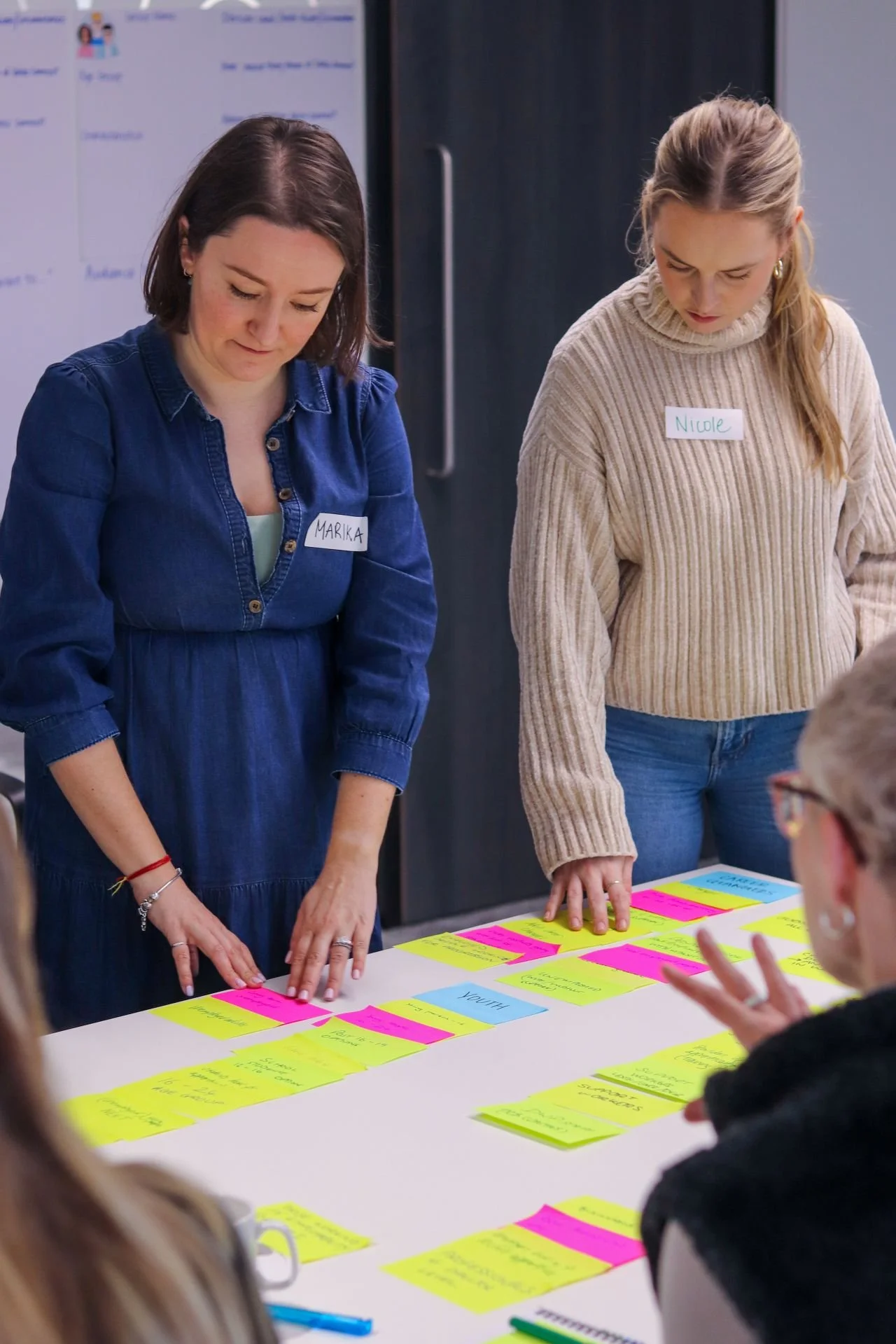Skills Connect
Regional skills portal for community residents
The West of England Combined Authority was set up in 2017 to make decisions and investments that benefit people living and working in Bath and North East Somerset, Bristol, and South Gloucestershire in the United Kingdom. Together, their aim is to deliver economic growth for the region and address some of their challenges, such as productivity and skills, housing, and transport.
The Skills Connect project is an approach to simplify the skills landscape in the West of England; providing the framework and support needed for people to get information, find training, or secure whatever support they need in relation to work, wherever they are in terms of their life position.
Role
UX Researcher
Timeframe
2 months
Client
The West of England Combined Authority
Year
2023
THE CHALLENGE
Upskilling
The West of England Combined Authority, an existing client, approached us to enhance and expand their skills resource page. They instead wanted to create a dedicated microsite called Skills Connect to support community members in their career journeys. Although the project team had a clear brief of what they wanted, user research was a crucial missing element. I took on the role of conducting user research in collaboration with our Design Lead, working closely with the Project Manager, Account Manager, UI Designer, and Technical Lead to develop solutions and establish the site's structure.
Discovery Process
Our discovery process aimed to gain a comprehensive understanding of the project's expectations, functional requirements, and the needs of potential users of the Skills Connect platform. We conducted three key activities that formed the basis of our recommendations:
Stakeholder Requirement Gathering Workshop
Defining User Groups Workshop
User Interviews
These sessions allowed us to gain a deeper understanding of the existing skills search structure, assess the current experience, and arrive at the optimal solution for users of the new platform.
SESSION ONE
Stakeholder Requirement Gathering Workshop
Defining Project Objectives
REQUIREMENT GATHERING
This initial workshop with Skills Connect’s key stakeholders was designed to gain a clear understanding of Skills Connect’s current situation and define clear goals and objectives for the project from both strategic and functional perspectives. This gave us key insights into Skills Connect’s strategy and a list of requirements for the new platform.
The workshop was split into two parts:
Part 1: Stakeholder Discussion
Part 2: Blue Sky Thinking
Part 1: Stakeholder Discussion
In the first part of this workshop, we facilitated a discussion around five key questions we had created in order to gather existing knowledge about Skills Connect, define and prioritize expectations for the new site, and outline the main goals and objectives for the project. Our conversation resulted in the following objectives.
Skills Connect Objectives
Serve as an online directory for skills and employment advice
Promote self-understanding of existing skill sets
Create a front door to regional resources
Create an ecosystem for skill resources
Be a reliable source of labor market info
Have a clear and simple navigation
Increase awareness of opportunities
Break down barriers to employment
Part 2: Blue Sky Thinking
The second part of the workshop was activity based. During this exercise, we sought to explore potential improvements and features of the new website. These could be known or needed uses or functions, as well as ideas, suggestions, and future “blue sky” thinking. We prompted users with two different statements:
“We want the website to…”
“We want the user to…”
With these in mind, we asked them to write down their thoughts and ideas on sticky notes and add them to the posters one by one while explaining them to the group for discussion.
After this task, we took the posters back with us and debriefed as a team. From here I began to affinity map the results to define the desired enhancements to the skills search platform.
SESSION TWO
Defining User Groups Workshop
Outlining Key User Groups
USER GROUPS
This second workshop with Skills Connect’s key stakeholders was designed to explore user types and their needs and goals for the new website.
In the first part of the session, we asked stakeholders to list every type of user they anticipated would interact with Skills Connect. From here, we began to explore how best to categorize and define the user types they had listed.
There was a long list of different user types identified in this exercise, and we began to see a pattern emerging between a few overarching themes:
Support Providers (Career Advisors, Parents, Mentors, etc.)
Support Recipients (Students, Job Seekers, Career Changers, etc.)
Support Partners (Businesses, Educational Institutions, etc.)
With these key user groups in mind, we moved to the second part of the session where we began to dive deeper into each user group by looking at their characteristics and relationship with Skills Connect as well as their overall goals and needs.
SESSION THREE
User Interviews
Meeting with users
USER INTERVIEWS
Conducting user interviews was the final activity of our discovery sessions. We met with five users provided by the Skills Connect project team and structured the interviews into two parts. The first part focused on understanding the process of providing and receiving support, while the second part sought to gather insights into their perceptions of the existing page and their expectations for the new site.
These interviews provided valuable insights into the interactions between support providers and recipients, enabling us to tailor the information architecture to their user journeys. Additionally, we gained valuable feedback on how we could enhance the existing functionality by refining support categories, enhancing filtering capabilities, and updating the overall look and feel.
CONCLUSIONS
Disocovery Outputs & Recommendations
Drawing Conclusions
FINAL OUTPUTS
After conducting all of our discovery sessions and subsequent analysis, we were able to define the problem statement for the project, clearly outline five key user groups with their accompanying user flows, and propose a sitemap based on the desired functionality.
SKILLS CONNECT PROBLEM STATEMENT
West of England Combined Authority needs to create a skills ecosystem for the region in order to uplift and upskill all age groups in the community, ultimately helping people progress in their work and improving the region as a whole.
Five Core User Groups
From our stakeholder workshop as well as our user interviews, we identified 5 key user groups that fell into three overarching themes.
Support Seekers
Youth: Users on a support-seeking journey trying to decide what career path is right for them.
Actively Seeking Adults: Users on urgent support-seeking journeys trying to enter or re-enter the workforce.
Passively Seeking Adults: Users on an information-seeking journey trying to understand how they can progress on their career journey.
Support Providers
Career Advisors: Users on an information-seeking journey searching for resources to provide their advisees (participants).
Support Partners
Partner Institutions: Users browsing the site trying to see if Skills Connect would be a good organization to partner with.
For each of these user groups, we defined their goals, needs, and the necessary considerations for the platform in order to meet their needs. Additionally, we defined user statements as well as the key user flows throughout the site to ensure all user groups would have a successful journey.
Building the Sitemap
After outlining our ideal user flows, we built our proposed sitemap. We were able to create the foundational information architecture of the new and improved platform with the sitemap. The goal of the sitemap was to simplify the existing structure, creating clear and efficient user journeys.
Beyond the basic scope
As a result of our research, we determined that there were a variety of beneficial functionalities and features that were beyond the original scope of the project. So while we defined our users and proposed an initial sitemap based on the original scope, we also created a list of additional features that we believed would greatly enhance the product and improve the overall user experience. These were outlined to the client in our discovery closure presentation, and additional documentation regarding the details of each additional feature and functionality was shared with the client to review. Should they choose to incorporate some, we would update the sitemap and project plan before moving into the design phase.
NEXT STEPS
Project Roadmap
Moving Forward
NEXT STEPS
Upon the official closure of the discovery phase and client sign-off of the potential enhancements, we will move into the design phase where we plan to create low-fidelity wireframes as well as UI designs based on branding created by an external agency.
Overall, the client was very pleased with the discovery phase and was excited to see there was potential to expand the platform beyond what they had even anticipated. Additionally, the response we had from the users we interviewed was very encouraging that this type of platform would be extremely well received and beneficial to not only them but their participants in facilitating their career journey.
View More
Mobile and web-based application with a bespoke content management system designed to improve school-to-parent communications.
Replatforming and redesigning Hitachi’s network of European websites.






